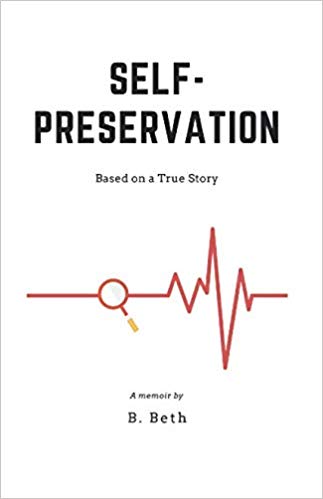Productivity & Habits
The Ultimate Guide to Anxiety, Depression & Dirt Power
If you live with anxiety or depression and feel like you’ve tried everything, the idea that plain old dirt could help sounds almost ridiculous. Yet a growing body of research shows that regular contact with soil, plants, and green spaces can calm your nervous system, improve mood, and support long-term healing.
In simple terms: gardening and intentional “green time” provide predictable routines, soothing sensory input, beneficial microbes, and gentle movement that together help rebalance your brain and body’s response to stress—without replacing professional care, but powerfully complementing it.
Table of Contents
- Why Anxiety and Depression Feel So Overwhelming
- Why Traditional Approaches Often Don’t Feel Like Enough
- The Science Behind the Power of Dirt
- Step-by-Step Framework: Using Nature to Rewire Your Mood
- Implementation Timeline: What to Expect Week by Week
- Troubleshooting: When It’s Not Working (Yet)
- People Also Ask
- Key Takeaways
- FAQ
Why Anxiety and Depression Feel So Overwhelming
Anxiety and depression are not just “in your head.” They’re signals from a stressed, overloaded nervous system that has learned to stay on high alert or shut down, even when you’re objectively safe.
Common signs include:
- Waking up already tense or exhausted
- Difficulty focusing, planning, or following through
- Feeling numb, hopeless, or emotionally flooded for no clear reason
- Overreacting to minor stress or feeling unable to react at all
When your autonomic nervous system (ANS) stays stuck in threat mode, everyday life starts to feel like a battle you can’t win.
Why Traditional Approaches Often Don’t Feel Like Enough
Therapy, medication, and lifestyle changes save lives. They are valid, essential options and often the frontline for managing anxiety and depression.
But many people still struggle because:
- They intellectually understand coping tools but don’t “feel” safer.
- Motivation crashes, so routines don’t stick.
- Recovery plans overlook the body and environment.
- Digital overwhelm and indoor lifestyles (post-2020 and into 2025) keep their systems wired for threat.
The missing link for many is bottom-up regulation: experiences that gently teach the body it is safe, over and over, until the brain updates its internal settings.
This is where the surprising power of dirt, gardening, and green spaces comes in.
The Science Behind the Power of Dirt
1. Rewiring Through Routine and Rhythm
Gardening naturally creates gentle structure without feeling like punishment.
You’re invited—not forced—to:
- Water at certain times
- Check new leaves, buds, and soil
- Weed, prune, harvest in repeating cycles
These small, predictable actions provide what researchers call sensory-safe repetition, which can help retrain an overactive or shut-down ANS to recognize calm (Porges, 2017).
Featured Insight (approx. 45 words):
Gardening routines work like micro-therapy sessions for the nervous system. Repeated, low-pressure actions—watering, weeding, observing growth—signal safety to the body. Over time, this reduces chronic threat responses linked to anxiety and depression and supports more stable energy, mood, and focus.
2. Green Time: Your Everyday Nervous System Reset
Spending time in parks, forests, balconies with planters, or community gardens has been shown to:
- Lower cortisol and blood pressure
- Improve heart rate variability (HRV), a marker of healthy regulation
- Reduce reported symptoms of anxiety and depression (Kotera et al., 2021; Kotera et al., 2020)
Stanford researchers and other leading experts highlight that even short, consistent exposure to green spaces can reduce rumination and stress-related brain activity. Harvard (2024) overviews similarly emphasize the mental health benefits of nature-based habits as part of integrative care.
3. Nature’s Mood-Boosting Microbes
Certain soil microbes—especially Mycobacterium vaccae—appear to influence pathways related to mood regulation.
Preclinical studies show this bacterium can:
- Support serotonin-related activity
- Enhance stress resilience and cognitive function (Matthews & Jenks, 2013; Juarez et al., 2022)
You don’t need to eat dirt. Simply touching soil, tending plants, and breathing in the garden environment may offer subtle, cumulative benefits alongside other treatments.
4. Fertile Ground for Neuroplasticity
Activities built into gardening—sunlight, light exercise, focus, creativity—are all associated with increased levels of brain-derived neurotrophic factor (BDNF), a protein that supports neuroplasticity (Brunoni et al., 2008).
More BDNF means:
- Greater capacity to form new, healthier mental patterns
- Better support for the brain as you practice coping skills and therapy tools
Think of it as fertilizer for emotional resilience.
5. Built-In Connection and Purpose
One of the strongest protective factors against anxiety and depression is meaningful connection.
Gardening can:
- Offer peaceful alone time that still feels purposeful
- Create natural opportunities for connection at community gardens or with neighbors
- Support intergenerational bonding (sharing herbs with a neighbor, planting with kids, tending a small balcony with a partner)
For many, this becomes a quiet antidote to loneliness and digital isolation.
Step-by-Step Framework: Using Nature to Rewire Your Mood
Here’s a practical, low-pressure way to harness the power of dirt, even if you have zero experience and minimal space.
Step 1: Start Tiny and Accessible
Choose something you can maintain on your hardest days:
- A single herb pot on your windowsill
- Three containers on your balcony
- One raised bed at home or a small plot in a community garden
The goal: consistent contact, not perfection.
Step 2: Create a Gentle Micro-Routine
Design a 5–10 minute daily ritual:
- Step outside or to your plants.
- Notice color, texture, temperature of the soil.
- Check moisture and water if needed.
- Pull 3–5 weeds or remove dead leaves.
- Take 3 slow breaths before you go.
These brief, predictable touches act as mini safety signals to your body.
Step 3: Add Sensory Grounding
As you garden, intentionally engage your senses:
- Feel the cool or warm soil in your hands.
- Notice specific shades of green.
- Listen for birds, wind, distant city sounds.
- Inhale the scent of herbs or earth.
This kind of embodied awareness helps interrupt spirals of anxious thinking and depressive rumination.
Step 4: Layer in Movement and Sunlight
As capacity allows, gently expand:
- Walk around your block to look at trees.
- Carry watering cans instead of using a hose.
- Do light stretching while you’re outside.
Light activity plus natural light reinforces better sleep, energy, and mood regulation.
Step 5: Build Meaning and Community
To deepen the impact:
- Grow something you can share (basil, cherry tomatoes, flowers).
- Join a local gardening group or community plot.
- Volunteer at a school, rooftop, or therapeutic garden.
New examples of meaningful integration:
- A remote worker schedules a 10-minute “garden check” break between video calls instead of scrolling.
- A college student grows low-maintenance succulents and herbs in a dorm window as a grounding ritual during exams.
- A parent and teen co-manage two raised beds as a weekly screen-free bonding project.
Each of these turns gardening into a living support system, not another task on your list.
Implementation Timeline: What to Expect Week by Week
Everyone’s journey with anxiety and depression is different, but here’s a realistic guideline.
Weeks 1–2: Gentle Introduction
- Start with 5–10 minutes, 3–5 days a week.
- Focus on showing up, not on results.
- You may still feel low or wired; that’s normal.
Weeks 3–4: Subtle Shifts
- Tasks feel a bit more familiar and automatic.
- You might notice brief pockets of calm while tending plants.
- Sleep or focus may improve slightly as your body collects safety cues.
Weeks 5–8: Building Regulation
- Your routine feels more natural.
- Mood swings may soften; recovery from stress is quicker.
- You’re more curious, a sign your system is less stuck.
Beyond 2 Months: Integration
- Gardening is now part of your mental health toolkit.
- You can adjust the level of effort with your energy.
- Combined with therapy, medication, or coaching, you have a sustainable, body-based anchor.
This is not a quick fix—but it is a realistic, science-aligned path to gradual change.
Troubleshooting: When It’s Not Working (Yet)
If you feel no benefit or more frustration, try adjusting rather than quitting.
Common issues and fixes:
- "I feel overwhelmed by plant care": Start with 1–2 ultra-resilient plants; set a reminder; make it a 3-minute ritual.
- "I have no outdoor space": Use window boxes, indoor planters with real soil, or visit a public park 2–3 times a week.
- "I feel guilty when I miss days": Expect inconsistency. The nervous system learns from patterns over time, not perfection.
- "I’m getting worse, not better": This is a red flag. Pause, talk to a mental health professional, and treat gardening as a supportive add-on, not your only approach.
Key Reminder:
Nature-based practices are powerful supports for anxiety and depression, but they do not replace professional assessment, crisis support, or prescribed treatment.
People Also Ask
How can gardening help with anxiety and depression?
Gardening supports mental health by combining routine, gentle movement, green exposure, and contact with soil in one activity. These elements together can reduce stress hormones, support nervous system balance, and create small daily moments of control, purpose, and calm.
Do I need a big garden to experience the benefits?
No. A few pots on a balcony, a single herb on a windowsill, or regular walks in a park can still provide meaningful benefits. The key is consistent, mindful interaction with plants and natural spaces, not the size or perfection of your garden.
Is it scientifically proven or just a trend?
Research across the last 10–15 years links nature exposure and horticultural activities to reduced symptoms of anxiety and depression and improved stress markers (Kotera et al., 2021; Shuda et al., 2020). Emerging findings on soil microbes and neuroplasticity add biological plausibility, though more large-scale human trials are still needed.
Can gardening replace my medication or therapy?
No. Gardening is best viewed as a complementary strategy. Any changes to medication or treatment should be made with a qualified professional. Use gardening to support regulation, not to self-abandon.
Key Takeaways
- Anxiety and depression often reflect a nervous system stuck in threat mode.
- Traditional treatments matter, but many people also need body-based, environment-based tools.
-
Gardening, soil contact, and green spaces offer:
- Predictable, soothing routines
- Lower stress markers and improved regulation
- Possible microbial and neuroplasticity benefits
- Increased connection, purpose, and joy
- Small, consistent actions with plants can, over time, help rewrite how your body responds to daily life.
FAQ
How often should I garden to see benefits?
Aim for 5–10 minutes a day or at least 3 days per week. Consistency matters more than duration. Even micro-moments—touching soil, watering one plant—count.
What if I’m not a “nature person” or I kill every plant?
Start with hardy plants like rosemary, snake plants, or mint. Let this be an experiment, not a test of your worth. The therapeutic value is in showing up, observing, and engaging with living things.
Is indoor gardening helpful too?
Yes. Indoor plants with real soil, natural light, and intentional care can create similar grounding experiences, especially when combined with regular outdoor walks or views of greenery.
Is this approach suitable if my depression is severe?
If your depression or anxiety is severe, intrusive, or includes self-harm thoughts, seek immediate professional support. Gardening may still be added gently—like sitting by a plant in sunlight—but only as part of a broader, supervised care plan.
References
- Porges, S. W. (2017). The Pocket Guide to the Polyvagal Theory: The Transformative Power of Feeling Safe. W. W. Norton.
- Kotera, Y., Lyons, M., Vione, K.C., & Norton, B. (2021). Effect of Nature Walks on Depression and Anxiety: A Systematic Review. Sustainability, 13, 4015.
- Kotera, Y., Richardson, M., & Sheffield, D. (2020). Effects of Shinrin-Yoku (Forest Bathing) and Nature Therapy on Mental Health: a Systematic Review and Meta-analysis. International Journal of Mental Health and Addiction, 20, 337-361.
- Shuda, Q., Bougoulias, M.E., & Kass, R. (2020). Effect of nature exposure on perceived and physiologic stress: A systematic review. Complementary Therapies in Medicine, 53, 102514.
- Matthews, D.M., & Jenks, S.M. (2013). Ingestion of Mycobacterium vaccae decreases anxiety-related behavior and improves learning in mice. Behavioural Processes, 96, 27-35.
- Juarez, V.M., Montalbine, A.N., & Singh, A. (2022). Microbiome as an immune regulator in health, disease, and therapeutics. Advanced Drug Delivery Reviews, 114400.
- Brunoni, A.R., Lopes, M., & Fregni, F. (2008). A systematic review and meta-analysis of clinical studies on major depression and BDNF levels: Implications for the role of neuroplasticity in depression. International Journal of Neuropsychopharmacology, 11(8), 1169-1180.




